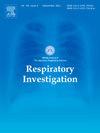A summary of the Japanese White Paper on Home Respiratory Care 2024
IF 2.4
Q2 RESPIRATORY SYSTEM
引用次数: 0
Abstract
The healthcare environment is undergoing rapid transformation, and the importance of resilience in adapting to the VUCA (Volatility, Uncertainty, Complexity, and Ambiguity) era is increasingly recognized across society. Following the White Papers on Home Respiratory Care published in 2005 and 2010, the Japan Respiratory Society, in collaboration with other academic societies and organizations, established the third White Paper on Home Respiratory Care Working Group to evaluate the current status and future directions for home respiratory care. A nationwide survey was conducted from 2021 to 2023, incorporating, for the first time, a dedicated assessment of caregivers and providers, in addition to physician and patient surveys. Among patients receiving long-term oxygen therapy (LTOT), the proportion with chronic obstructive pulmonary disease decreased from 44.8 % in 2010 to 37.0 %, whereas pulmonary fibrosis/interstitial pneumonia increased from 18.2 % to 30.1 %. Inpatient pulmonary rehabilitation was provided by 70.8 %, while outpatient rehabilitation was available at 32.1 %. Overall, 56.3 % of patients sought guidance on recognizing signs of disease exacerbation. And patients had received prior instruction expressed a need for additional education on disaster preparedness. Among caregivers, the average age was 68 years, with 52.7 % reporting health issues classified as modified Medical Research Council grade ≥1. More than half of caregivers perceived caregiving as a significant burden. Additionally, 77.3 % of providers utilized disaster response systems for LTOT patients. These findings underscore the necessity for collaboration among respiratory-related academic societies, government agencies, patients, caregivers, and the media to facilitate comprehensive discussions on sustaining and improving well-being and to enhance information dissemination.
日本《家庭呼吸护理白皮书2024》摘要
医疗保健环境正在经历快速转型,整个社会越来越认识到适应VUCA(波动性、不确定性、复杂性和模糊性)时代的弹性的重要性。继2005年和2010年发布的家庭呼吸护理白皮书之后,日本呼吸学会与其他学术团体和组织合作,建立了第三次家庭呼吸护理白皮书工作组,以评估家庭呼吸护理的现状和未来方向。从2021年到2023年进行了一项全国调查,除了医生和患者调查外,还首次纳入了对护理人员和提供者的专门评估。在接受长期氧疗(LTOT)的患者中,慢性阻塞性肺疾病的比例从2010年的44.8%下降到37.0%,而肺纤维化/间质性肺炎的比例从18.2%上升到30.1%。70.8%的患者接受住院肺部康复治疗,32.1%的患者接受门诊康复治疗。总体而言,56.3%的患者寻求识别疾病恶化迹象的指导。病人事先接受过指导,表示需要更多的备灾教育。在护理人员中,平均年龄为68岁,52.7%的人报告的健康问题被归类为修订的医学研究委员会等级≥1。超过一半的照顾者认为照顾是一种重大负担。此外,77.3%的医疗服务提供者为ltt患者使用了灾难响应系统。这些发现强调了呼吸相关学术团体、政府机构、患者、护理人员和媒体之间合作的必要性,以促进关于维持和改善福祉的全面讨论,并加强信息传播。
本文章由计算机程序翻译,如有差异,请以英文原文为准。
求助全文
约1分钟内获得全文
求助全文

 求助内容:
求助内容: 应助结果提醒方式:
应助结果提醒方式:


